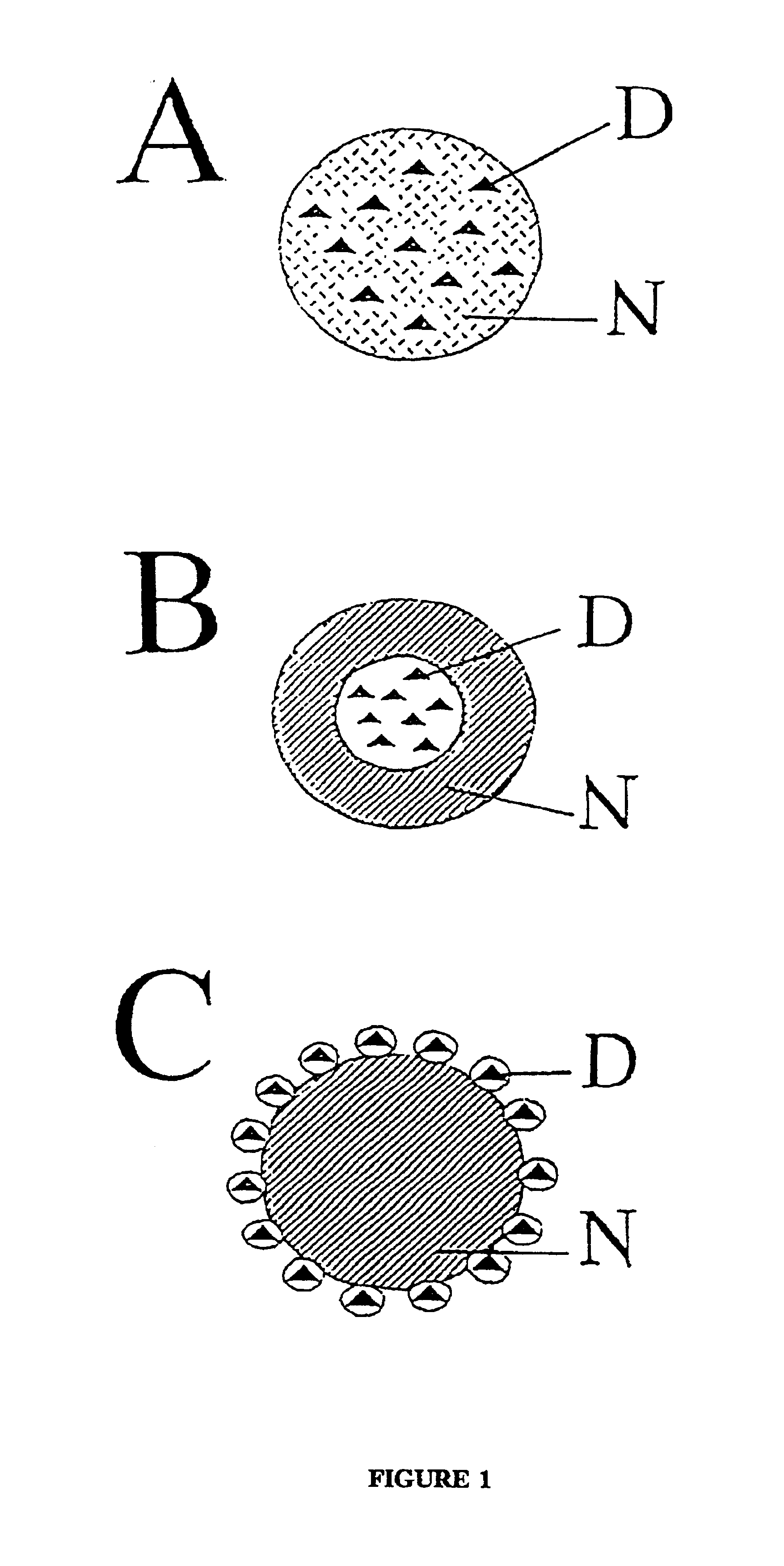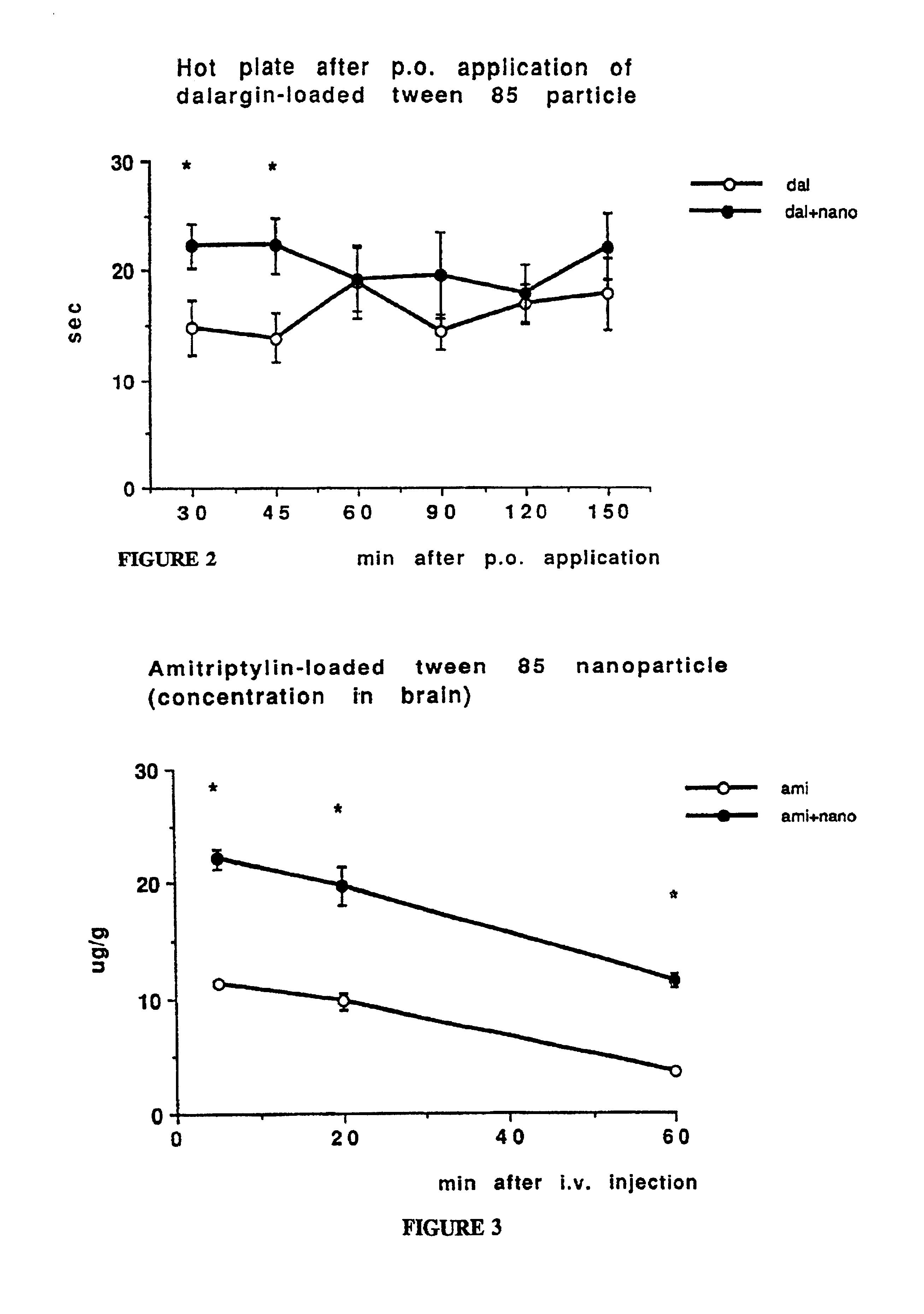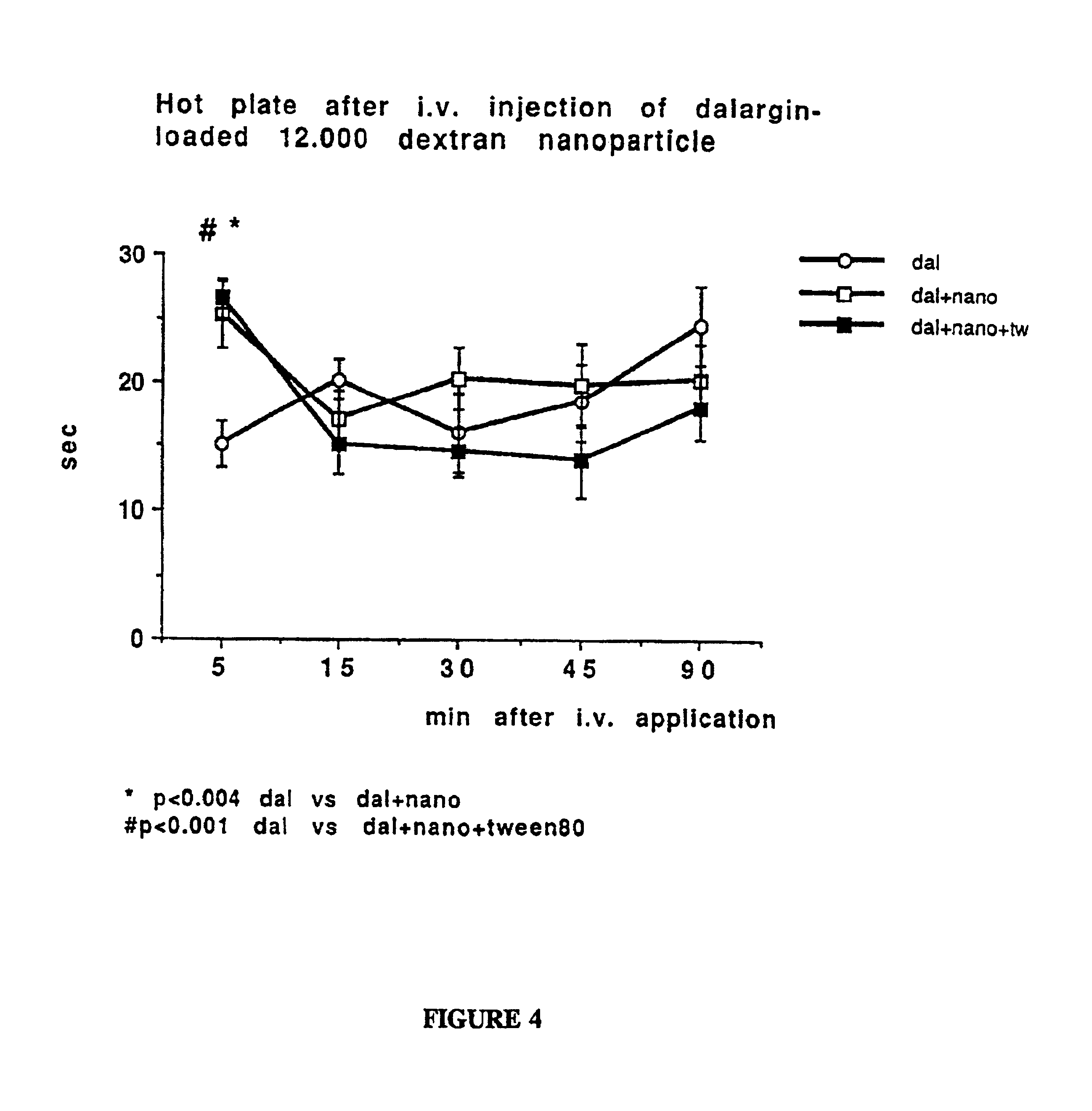Drug targeting system, method of its preparation and its use
- Summary
- Abstract
- Description
- Claims
- Application Information
AI Technical Summary
Benefits of technology
Problems solved by technology
Method used
Image
Examples
example 1
[0111]In the one preferred embodiment, the nanoparticles are made from polyalkyl cyanoacrylates (hereafter also referred to as “polybutylcyanoacrylate”) of the general formula:
[0112]In this example of the present invention, the nanoparticles were prepared using an acidic polymerization medium containing polysorbate 85 as stabilizer (polysorbate 85 1% in 0.01 N HCl; polysorbate 85, obtainable under the trade name “Tween® 85”, is a poly-oxyethylene (20) sorbitan trioleate manufactured by Deutsche ICI GmbH, Germany, and is, in accordance with the information provided by the manufacturer a mixture of partial esters of sorbitol and its anhydrides with oleic acid, copolymerized with (on average) 20 moles ethylene oxide per molecule sorbitol). In the in vitro study, there was used butylcyano-acrylate which was added in an amount to obtain a 1% nanoparticle suspension. The mixture was agitated by stirring with a magnetic stirrer at 600 rpm for 4 h to allow nanoparticle formation. The resul...
example 2
[0113]To evaluate whether substances of the Dextran series are useful to serve the function of the stabilizer, there was also evaluated a low molecular weight member of the Dextran series (having a lower molecular weight than Dextran 70.000). Thus, another embodiment of nanoparticle fabrication used Dextran 12.000 as the stabilizer (1% in 0.01 N HCl) (Dextran 12.000 obtained from Sigma, Germany; according the information of the manufacturer, this product is a polysaccharide having an average molecular weight of 12,000 g / mole, which was produced by Leuconostoc mesenteroides strain No. B.512). In the in vitro study, butylcyanoacrylate was used as the monomer for the nanoparticle polymerization. The monomer was added to obtain a 1% nanoparticle suspension.
[0114]Again, the mixture was agitated by stirring with a magnetic stirrer at 600 rpm for 4 h to allow nanoparticle formation. The resulting suspension was neutralized with 0.1 N sodium hydroxide solution, filtered through a sintered g...
example 3
[0117]1. In order to test the pharmacological usefulness of this approach, the nanoparticles of Examples 1 and 2 were adsorbed with a drug which does not pass the bbb when given systematically, the leu-enkephalin analogue dalargin. Dalargin is a highly potent analgesic when injected directly into the brain, but it is without effect when given peripherally.
[0118]Dalargin was adsorbed to poly(butyl cyanoacrylate) nanoparticles which were stabilized with polysorbate 85. The adsorption step was carried out in PBS as the solvent for dalargin by stirring the above nanoparticles (solid nanospheres having an average particle diameter of about 300 nm) in said dalargin solution which had a content of said analgesic compound in said solvent of 1 mg / ml PBS for a time of 3 h.
[0119]After this time, the preparation was injected intravenously into mice at a dalargin dose of 10.0 mg / kg. Various preparations include pure dalargin solution and empty nanoparticles served as controls.
[0120]Activity thre...
PUM
| Property | Measurement | Unit |
|---|---|---|
| Transport properties | aaaaa | aaaaa |
Abstract
Description
Claims
Application Information
 Login to View More
Login to View More - R&D
- Intellectual Property
- Life Sciences
- Materials
- Tech Scout
- Unparalleled Data Quality
- Higher Quality Content
- 60% Fewer Hallucinations
Browse by: Latest US Patents, China's latest patents, Technical Efficacy Thesaurus, Application Domain, Technology Topic, Popular Technical Reports.
© 2025 PatSnap. All rights reserved.Legal|Privacy policy|Modern Slavery Act Transparency Statement|Sitemap|About US| Contact US: help@patsnap.com



